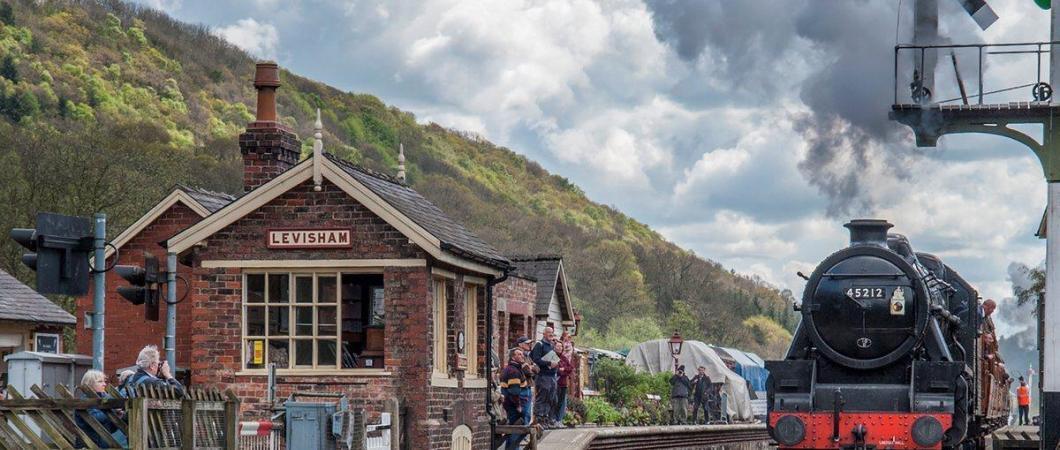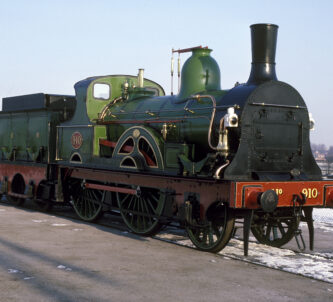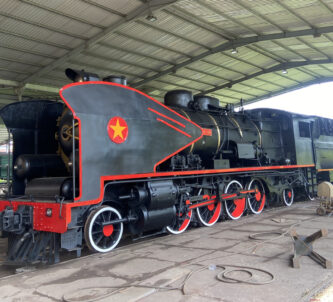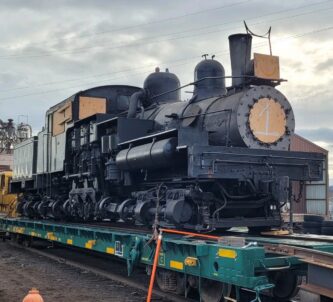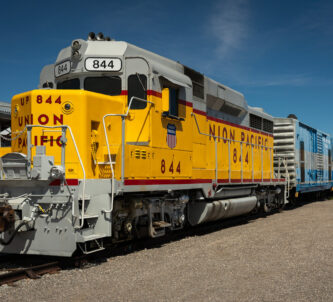Restrictions on domestic coal burning proposed in the UK Government’s consultation on Clean Air Strategy published in January this year, pose a problem for heritage railways.
Everybody* recognises the urgent need to reduce our use of fossil fuels, but, as the Heritage Railway Association (HRA) Board Member, Chris Price explains, that puts heritage railways at a disadvantage:
“The UK still burns eight million tonnes of coal a year, but this is mainly in pulverised form for the power, steel and concrete industry. Sized and lumped coal is a tiny part of coal used in the UK. If, as they propose, DERA remove the need to produce coal for the domestic market, this will mean the heritage movement will be the only major user of lumped coal which could be too small a quantity to justify UK producers to maintain supply.”

in these quantities is no longer seen on the
railways. (Photo: HRA/Carey Communications)
90% of coal for British heritage railways currently comes from four British opencast sites, which represents less than 0.5% of all the coal burnt in the UK. The total lumped coal requirement across the country represents less than 2% of the UK’s annual requirement.
Chris Price continues: “Our concern is that only two million tonnes of the eight million used in the UK is mined in this country and planning permissions are not being granted to either increase the size of these sites or open new ones.”
“We will be forced to buy coal abroad, predominately from Russia, increasing our carbon output significantly as a result of the extra distance to transport the more expensive import.”
The HRA and the Heritage Fuels Alliance (HFA) calculate that a total of around 35,000 tonnes of coal is used annually by heritage railways and other coal fired applications including steam boats, traction and pumping engines, steam lorries, cars and model locomotives, as well as static applications such as blacksmiths, forges and the grates of stately homes and museums.
In the scheme of things that’s not a great amount – burning coal in the heritage railway sector produces a carbon output similar to approximately 300 single flights across the Atlantic and there are over 84,000 such flights across the Atlantic every year – but any amount of coal burning is almost certainly detrimental to the environment so how does the heritage rail sector hope to secure its future?
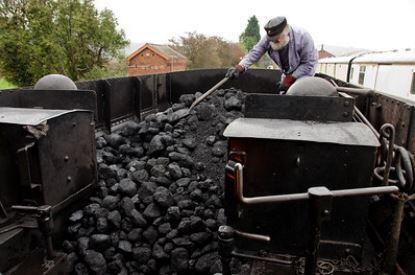
rail. (Photo: HRA/Carey Communications)
Two months ago (July) the All-Party Parliamentary Group on Heritage Rail published a report outlining the importance of the heritage rail sector and offering a six-point plan for steps towards maintaining continuity of coal availability, and environmental mitigation measures.
Steam trains are an considered an essential part of the national cultural heritage and are the principal attraction for 13 million visitors a year. Direct earnings are £130 million annually and the railways generate some £400 million for the national economy. Heritage railways are too, an important source of employment and skills training, particularly in rural areas. The 158 operational heritage railways in the UK provide full-time equivalent employment to 4,000 people, who operate 460 stations across the UK (the same number as Northern Rail) and over 562 miles of track.
Steve Oates, the HRA’s Chief Executive, noted: “The APPG Report highlights the fact that the true scale of Britain’s heritage railway sector simply isn’t fully appreciated. Our members attract more visitors than the UK’s top seven international tourist attractions combined – places like the Tower of London, Stonehenge, St Paul’s Cathedral or Westminster Abbey.
In a recent House of Lords debate on heritage railways, Minister Lord Ashton said: “We are working carefully to consider how we might achieve a successful balance between enhancing environmental and public health protection and ensuring that the UK’s heritage vehicle industry and indeed heritage houses that burn coal grates, continue to thrive.”
The APPG’s six-point plan proposes that..
- The Minister’s policy statement is written into future strategy and any subsequent legislation.
- The relevant government departments (DEFRA, DCMS and Transport) will be called to work with the HRA and coal suppliers, to explore ways to continue and fund the long-term supply of coal.
- The HRA encourages best practice on locomotive maintenance and management in order to minimise CO2 emissions. For example, the preheating of locomotive boilers with a ‘warming fire’ lit the day before use is a method widely used by many railways. It can reduce emissions from trying to raise steam too quickly and can protect boilers from damage from rapid heating and expansion.
- It proposes that heritage railways explore carbon offset strategies, such as solar power for premises, tree planting, or a green levy on passenger tickets.
- It encourages pursuit of joint purchasing and buying group opportunities facilitated with the help of the HRA.
- It asks the government to expedite extension of workings for existing opencast mines, and to include a longer transition from coal in government plans.
It’s a delicate balance. Everyone would like to see the steam heritage industry, and the environment, protected. All hope a compromise can be reached.
*Except for Trump and an alliance of climate-change deniers
Feature image: North Yorkshire Moors Railway, Levisham station – Graham Staples
UPDATE (18 Dec 2020): RailAdvent reports that Newcastle City Council has refused the planning permission application for a new coal mine at Dewley Hill, near Newcastle. The Heritage Steam Association (HRA) had been supporting the application, hoping it would secure affordable high quality coal to continue running steam trains. Heritage railways in Britain will now have to find ways to import, store and handle the coal it needs. The HRA predicts that current supplies of English steam coal will run out in 2021, whilst coal supplies in Wales will run out in 2022.

